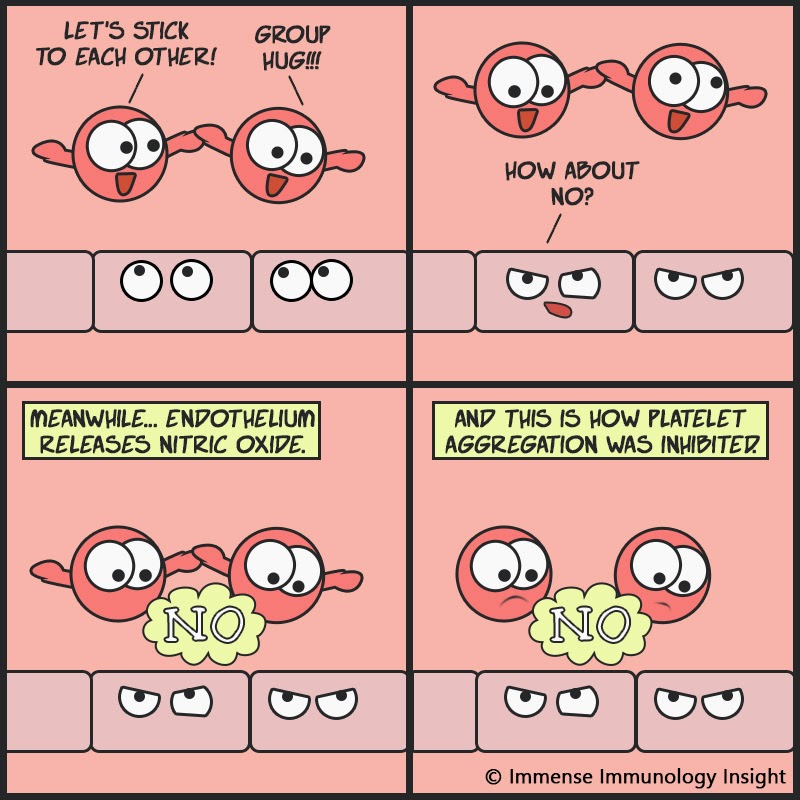 |
| Platelets, Endothelium and Nitric oxide |
Let's learn about a not-so-negative word.. Yes, I'm talking about nitric oxide, not no. (If you got whatever I meant :P )
Nitric oxide (NO) is formed from L-arginine in endothelial cells.
NO stimulates guanylate cyclase, increasing cyclic guanosine monophosphate (cGMP) production in target cells; which causes vasodilatation; and inhibits platelet adhesion and aggregation. The highlight of our comic today.
NO is rapidly destroyed by hemoglobin and thus functions as a paracrine hormone. (Accidental poisoning or overdose of a nitrate containing compound may cause methemoglobinemia )
Interesting facts: Intravenous infusion of an arginine analogue that blocks NO production leads to an immediate and substantial rise in blood pressure. This phenomenon suggests that NO is released continually and basally to regulate vascular tone.
Related post:
Anti-platelet drugs, receptor and their deficiencies mnemonic

spinamba casino
ReplyDeletespinson casino
slottojam casino